Introduction
La Paz is a place to get high, constantly high. I am not referring to ingesting mind-altering drugs. Rather I am talking about being closer to the sun. Before I arrived, I knew La Paz is the highest capital city in the world at approximately 12,000 feet (3650 meters). I did not know that most walking there would be on steep slopes.
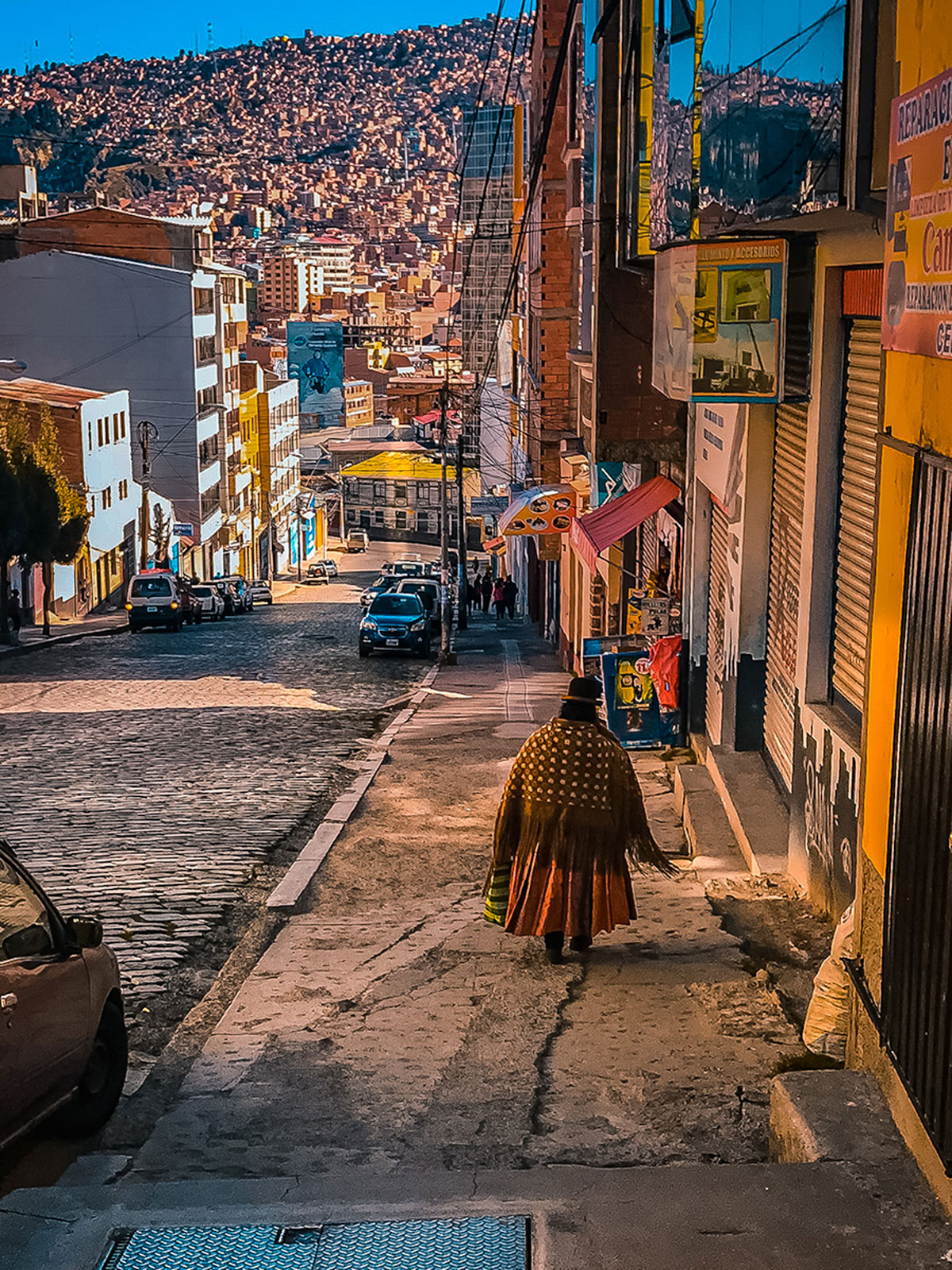
I did not know that there are cable cars crisscrossing between the surrounding mountains that are another 1,000 feet about the ground.
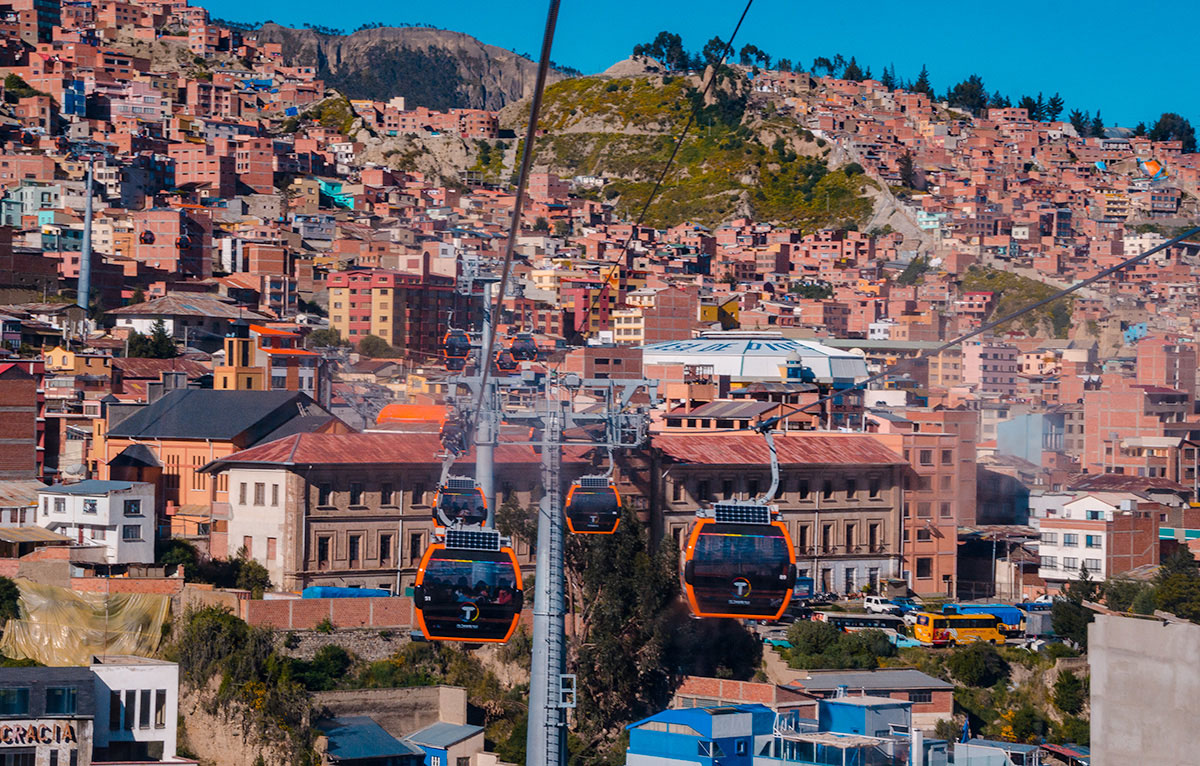
I did not know that the surrounding snowcapped mountains are even higher.

It quickly dawned on me how little I knew about almost every aspect of La Paz. At the end of my stay, I was convinced this is one of the most fascinating cities in the world.
Our Story
My wife Khadija and friend Steve scheduled a hike on the Inca Trail to Machu Picchu for the beginning of May 2018. We decided to acclimate to the altitude by traveling to the Bolivian Altiplano (High Plains), situated between branches of the Andes Mountains.
Bolivia is a two-part post. This part describes the highlights of our two active days in La Paz with all of the places we visited within walking distance of each other. Part 2 covers the cities of Sucre, Potosi and Uyuni. There is another post on Lake Titicaca which lies in both Bolivia and Peru.
We found that acclimation is needed. We flew overnight from New York and arrived at a friend’s apartment mid-morning. I had a headache and slept for a few hours. Khadija and Steve walked downhill to a grocery store twenty minutes away. Coming back up the hill in the hot sun, they found it was strenuous. During the afternoon, we had many cups of coca-leaf tea and conserved our energy.
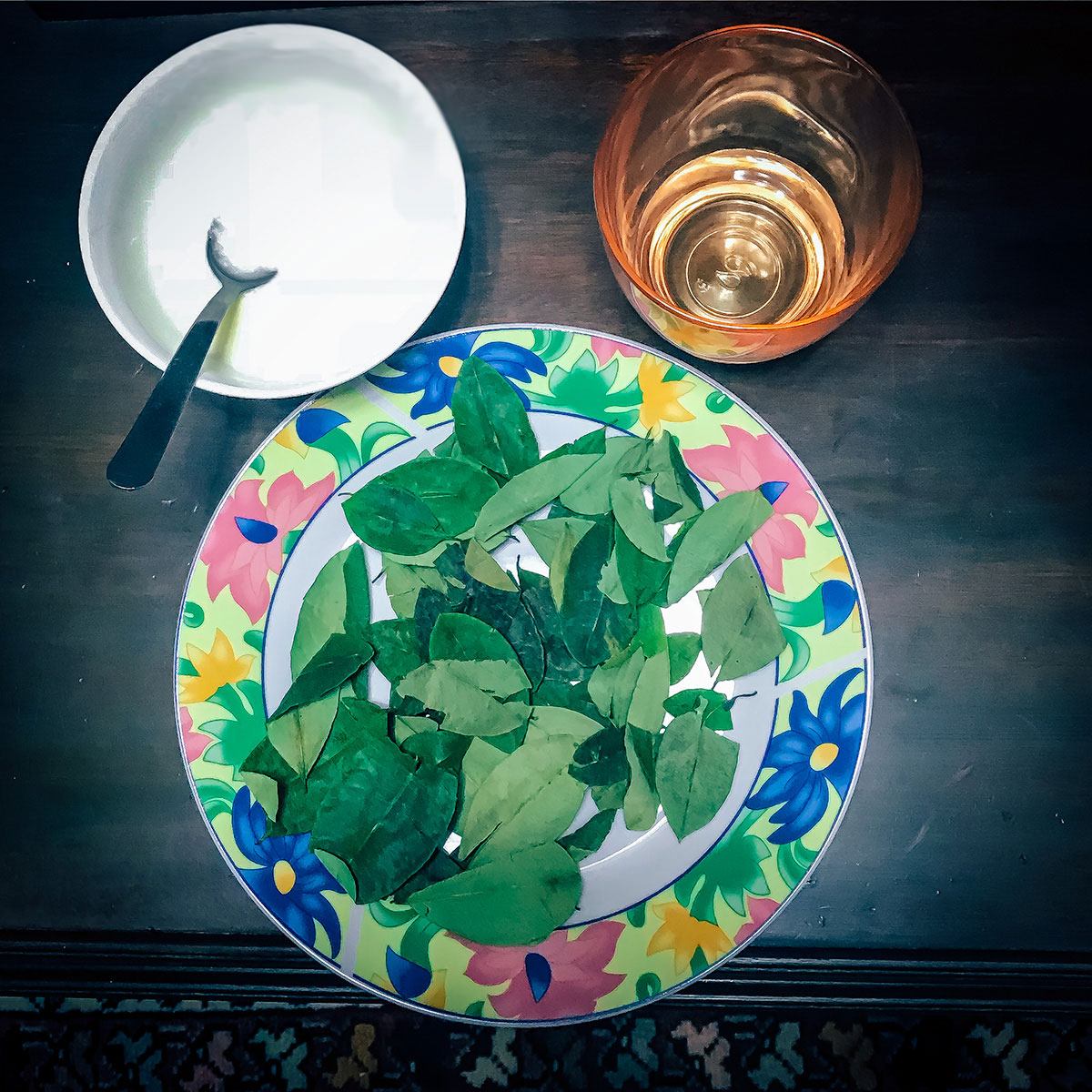
Coca is a mild stimulant which helps as the body increase the red blood cell count in order to take in more oxygen from the thinner air. By the night, we were feeling better. The next day we had some fatigue but were able to do what we wanted. On the third day, we felt more-or-less normal.
Plaza Murillo
In the historical center of the city lies Plaza Murillo. When La Paz was still a colonial city under Spanish rule, Murillo Square was the main water source in town, making it a hub of activity. Around the square are impressive buildings, some from colonial times including the National Legislature Building.
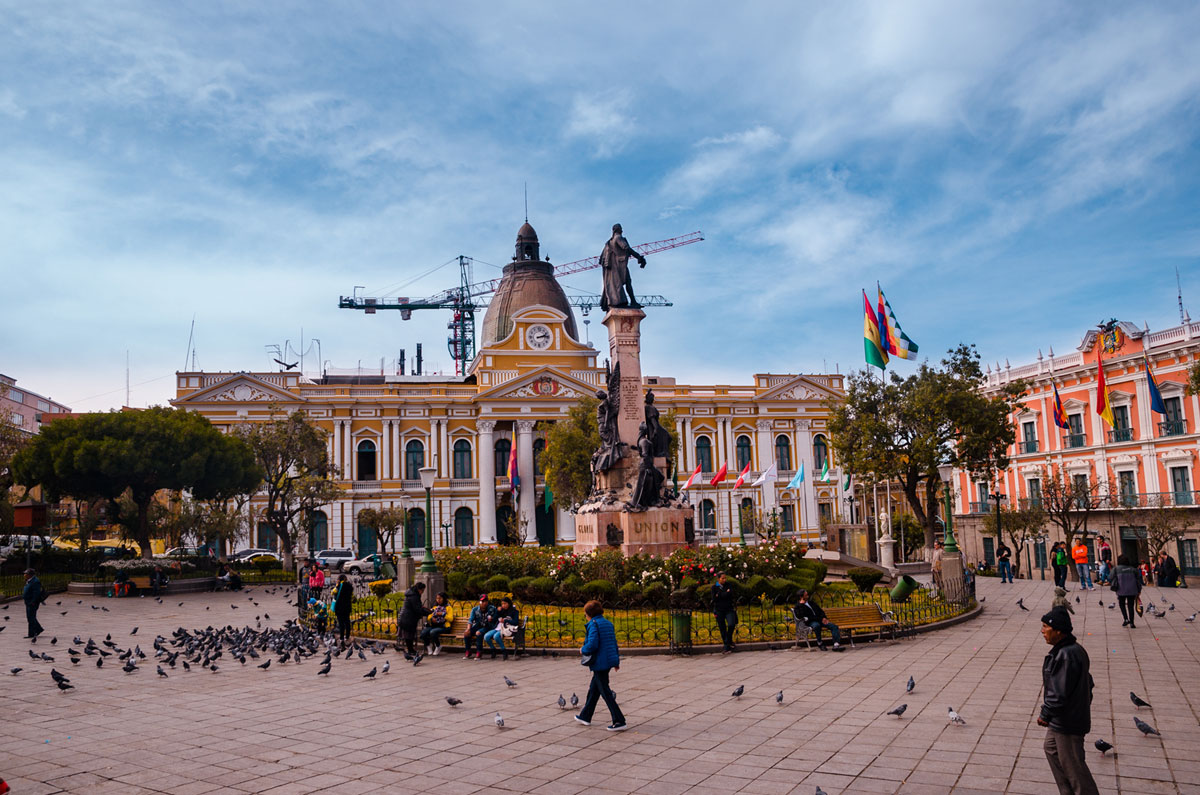
The pink one next to it is the Government Palace. This building, patrolled by red-uniformed guards, was the City Hall originally but now houses the Bolivian president’s office. During its history, the building burned eight times and is now nicknamed Palacio Quemado, the Burned Palace.
Next to the Government Palace is a cathedral dating from 1835. It was only competed in 1987 with the towers being the last component to be finished. The towers were built for Pope John Paul II when he came to La Paz in 1989. The Cathedral Basilica of Our Lady of Peace is also called La Paz Cathedral.
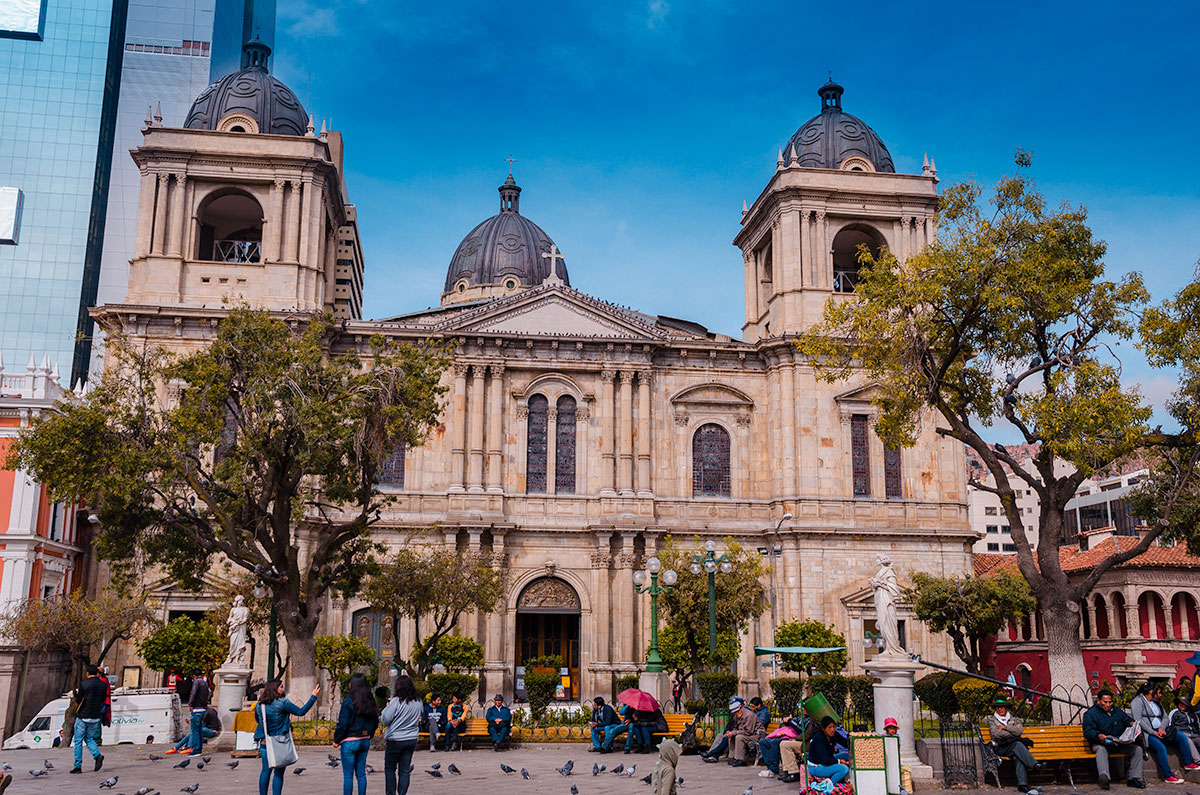
While the city Sucre has been constitutionally recognized as the capital since 1839 The seat of government was moved to La Paz sixty years later. Now it is known as the de facto or administrative capital. The metropolitan area of La Paz and the satellite city of El Alto has a population of over 1.3 million.
While the buildings are impressive in the square, we had fun hanging out watching the children enjoy themselves.
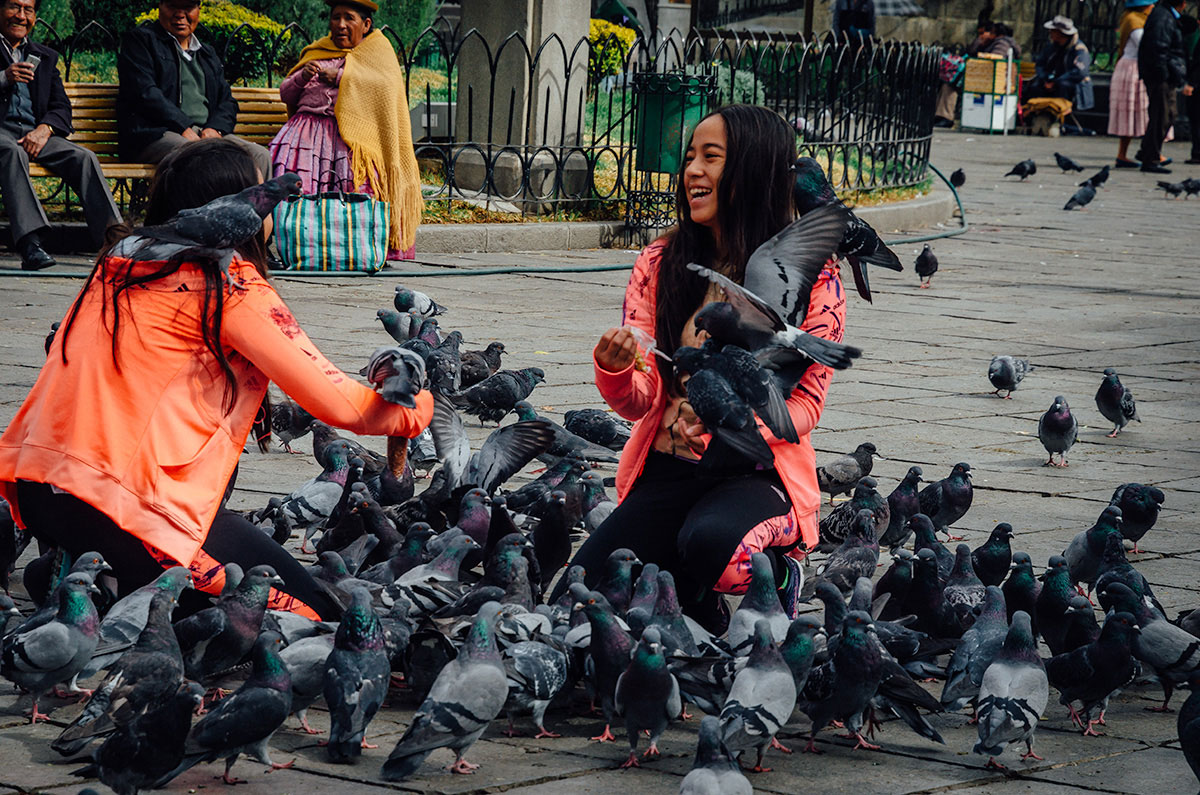
We also saw a demonstration by indigenous woman.

There is a population of indigenous Aymara and Quechua women (“cholas”) throughout the country that wear bowler and other hats. They generally wear wide skirts, often in multiple layers and reaching to their ankles. There are differences in dress depending on where in the country they are from. They generally don’t like to be photographed and will often cover their faces with hats or clothing if they believe they are being photographed. However, in this situation they did not have this issue, as they wanted the publicity for their protests.
Quechua was the official language of the Inca empire and is spoken by over eight million today throughout the Andes countries. There are over one million Aymara speakers, mostly in Bolivia. These languages have common words stemming from centuries of living closely together, but are distinct.
Mercado Rodriguez
Mercado Rodriguez is the largest food market in La Paz. The market boasts an incredible array of fresh produce as well as over two hundred varieties of potatoes. It also sells flowers, prepared food and household items.
The mostly women vendors either have stands for their goods…

…or sit on the sidewalk.
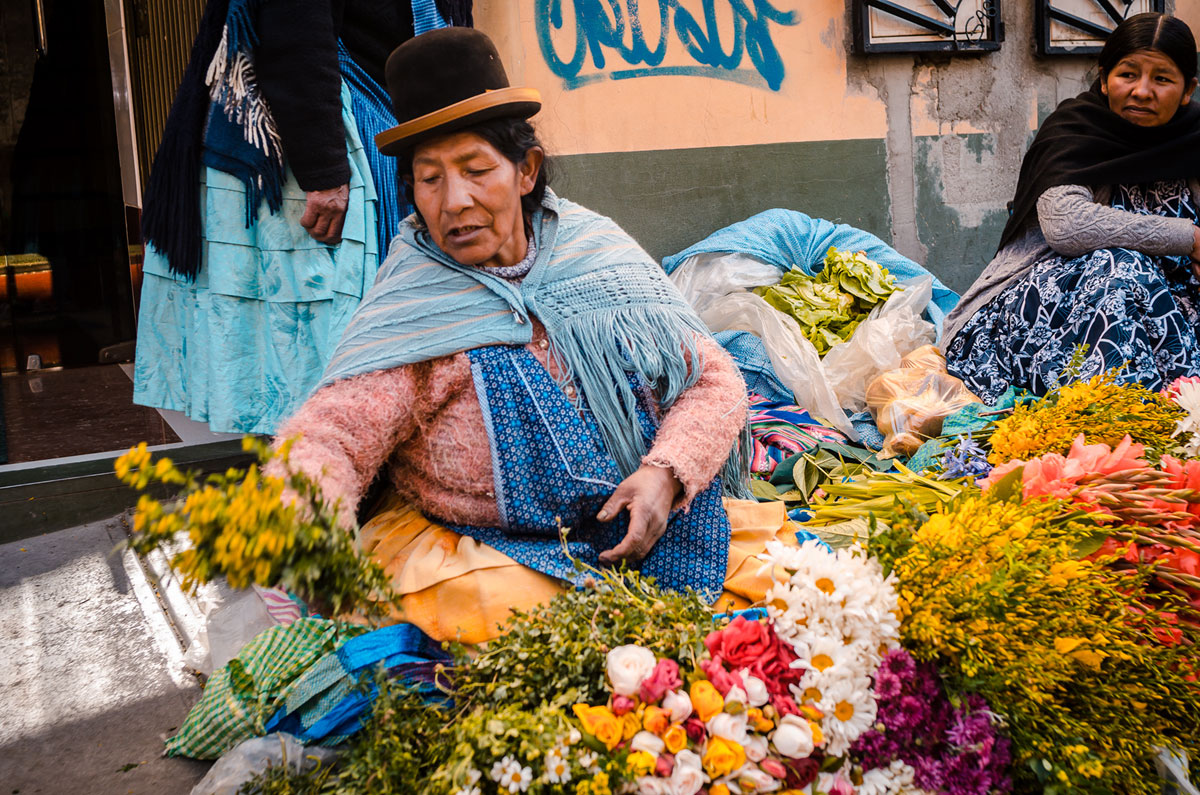
While the vendors are of all ages, the majority are on the older side.
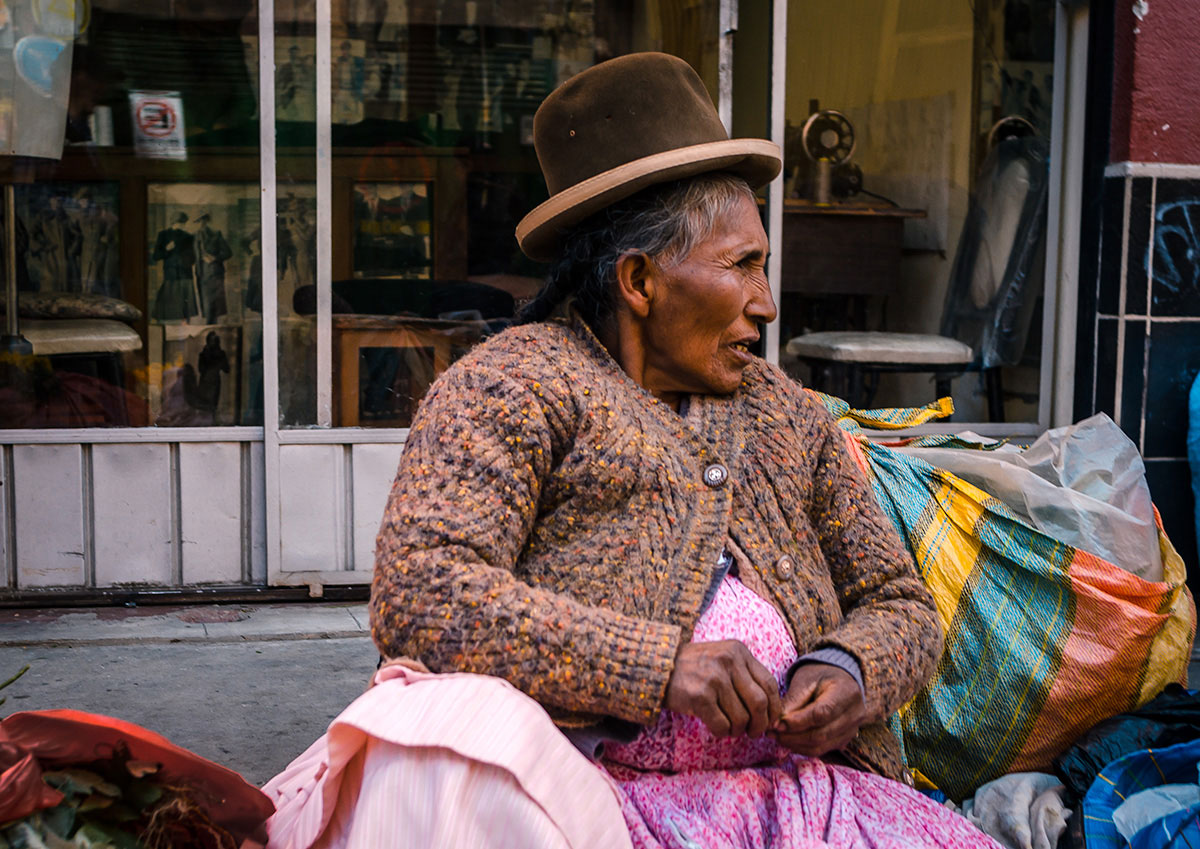
The market starts at the crack of dawn (best time to start photographing) and goes all the way until 10pm most nights.
Museo Nacional de Etnografía Y Folklore
MUSEF gives visitors an extraordinary look into the cultural history of the people of Bolivia. The museum entrance is in a colonial building that used to be a bank before it was repurposed and connected to a modern building to expand the exhibits. The facility houses many exhibits on indigenous art and iconography. Our favorite, by far, and the most popular is the four-room spread of around fifty masks from different ceremonies and festivals throughout the country. Here’s one of a mustached man.

Here’s another of a puma.

Many Andean cultures venerated the puma as a symbol of strength and life. The Incas designed Cusco, Peru in the shape of a puma. Pumapunku (Door of the Puma) is part of a large temple complex from Tiwanaku, one of the most important pre-Inca empires.
San Francisco Church and Plaza
A year after the founder of the city, Alonso de Mendoza, reached the site in 1584, the land was donated to the Franciscans and construction began on the church. This is not the original building, though, as the first church had collapsed in 1612 due to unusually high levels of snowfall. After this, it wasn’t until 1743 that a new church started to be built.
Today, the church is a minor basilica and there is a museum within part of the convent. The San Francisco Church is known for the intricate carvings on the outside and the sweeping neoclassical architecture on the inside.

The carved façade has Catholic symbols, as well as ones from native mythology and artwork. By incorporating native beliefs, the Church was able to convert indigenous people to Christianity.
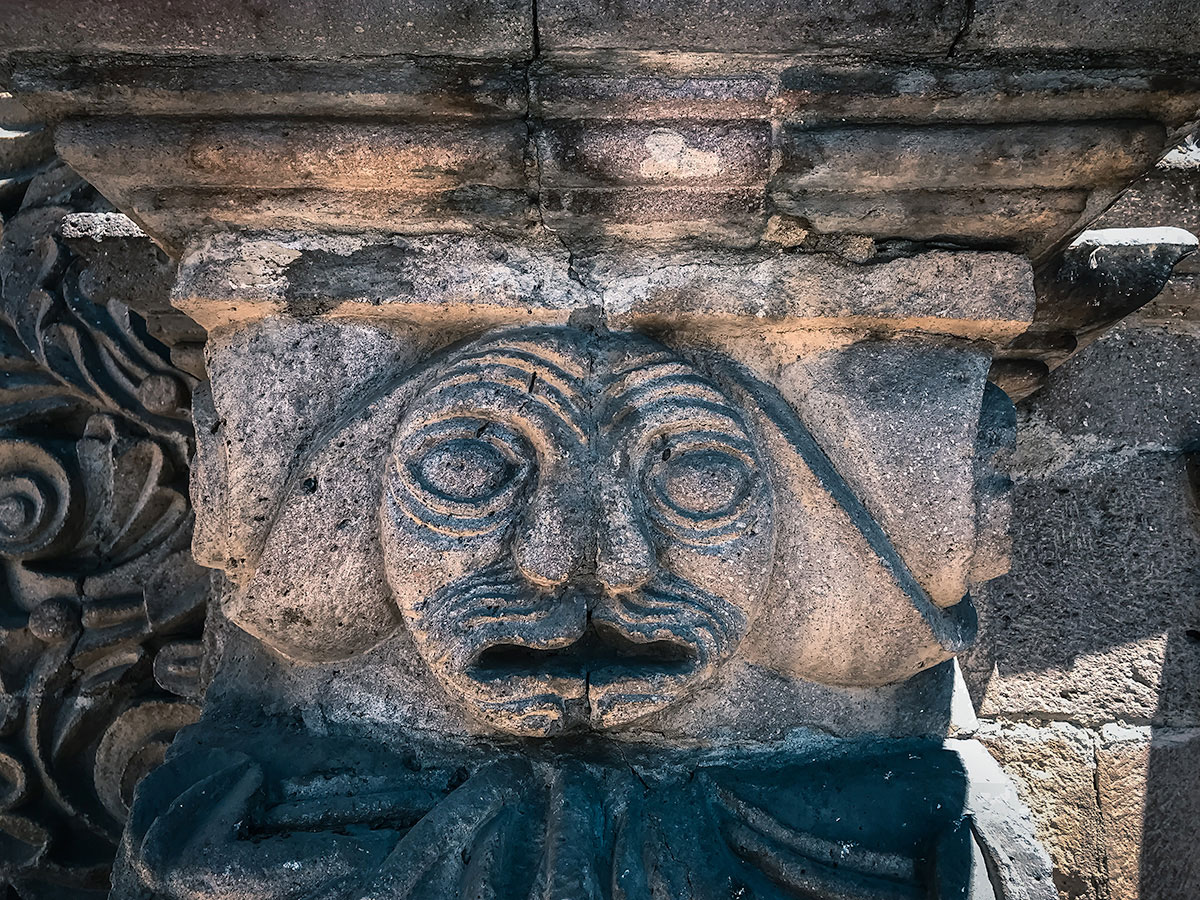
This is another area we spent hours watching the local people, including those in the modern world…
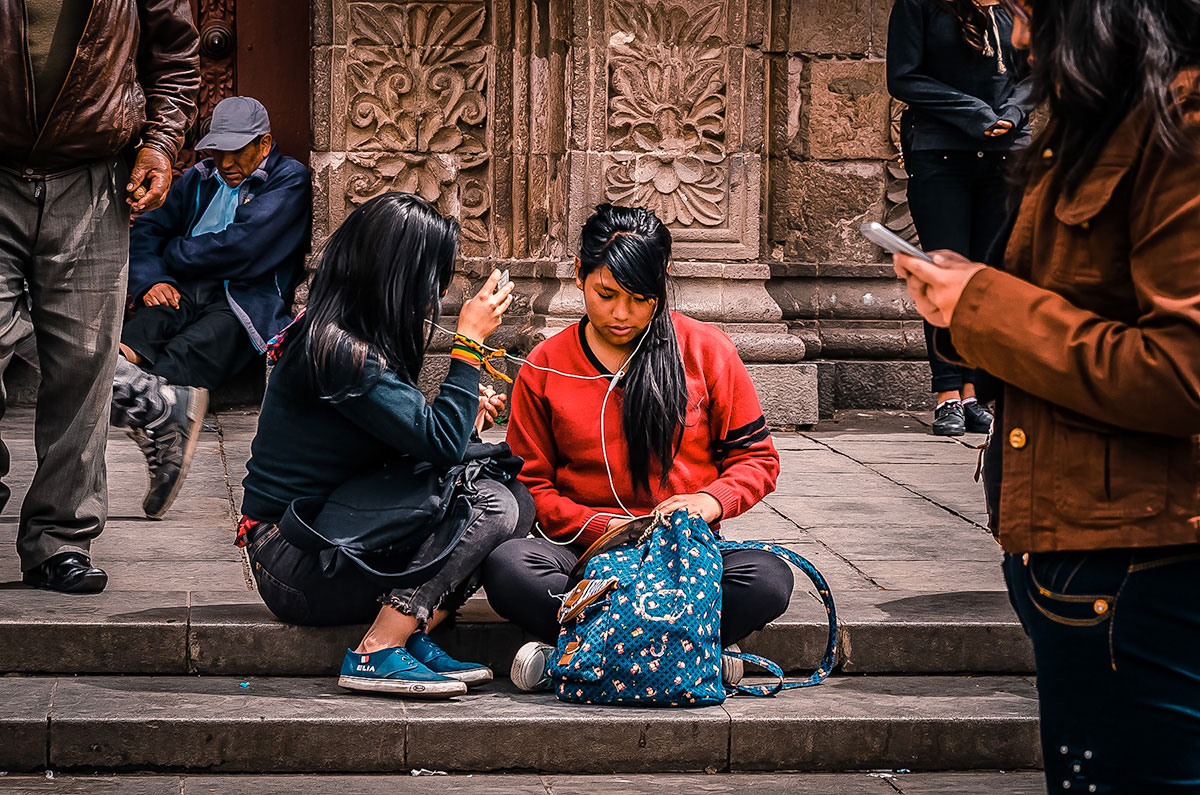
… those in traditional dress…

…and commonly a crowd with a mix of contemporary and indigenous clothes.
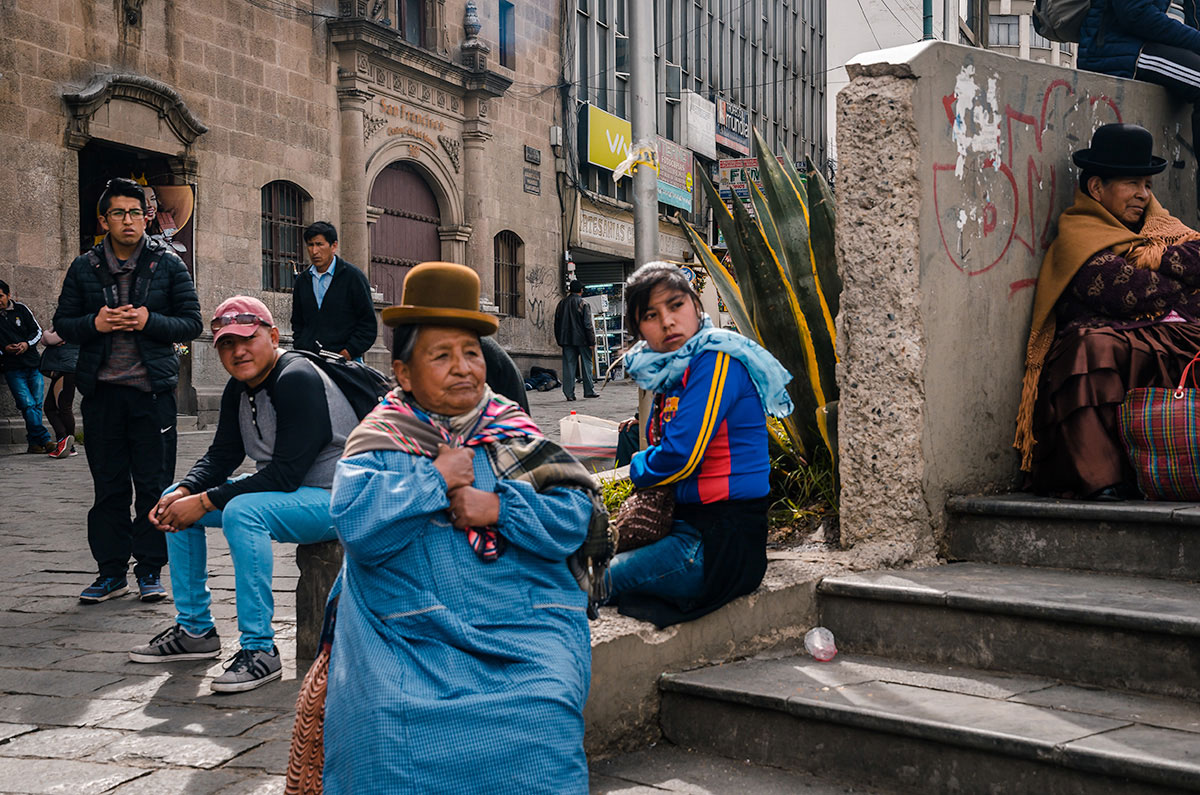
Nearby is the Hotel Presidente where adventure seekers rappel or rap jump down the building at different heights.
Also nearby is a good panorama of the mountains and the city’s architecture.
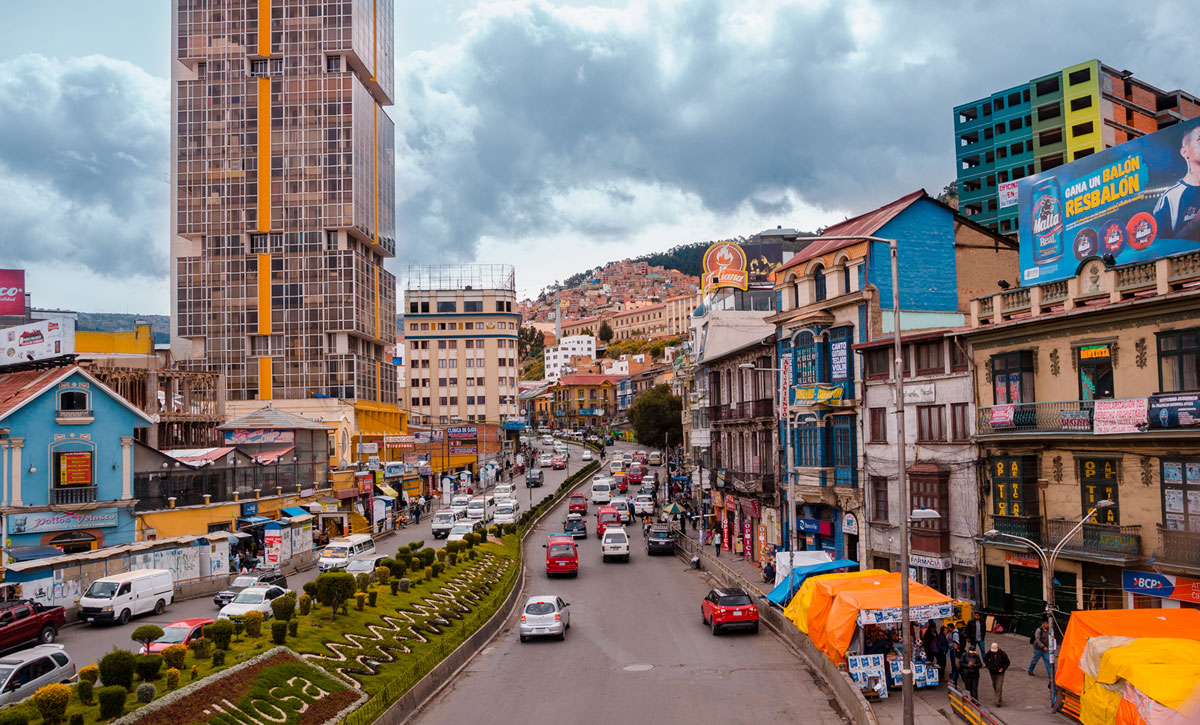
Next to the church, we ate lunch twice at Banais Café, on the side of the church.
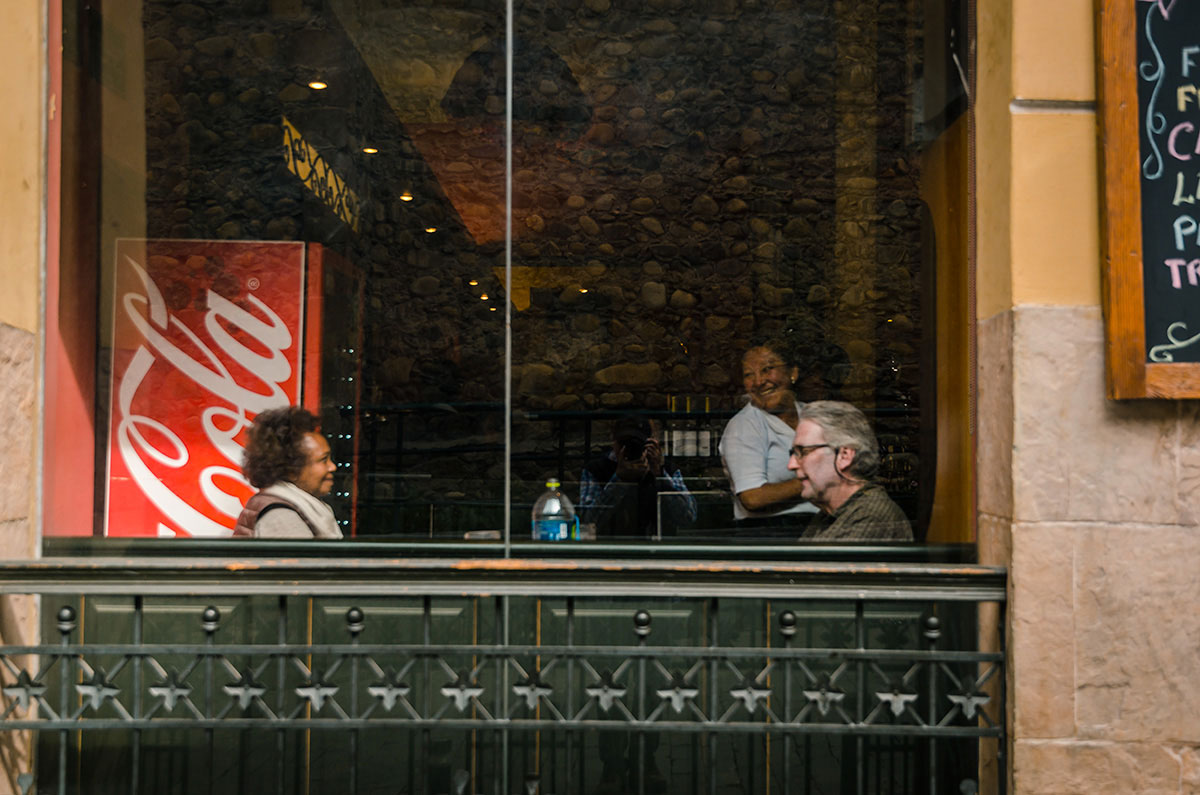
It was a good place for snacks and meals, but also to watch the locals walk by in their daily pursuits.
Mercado de Hechicería
The Mercado de Hechicería (Witches’ Market) is a street with stalls and shops offering Aymara mysticism souvenirs and herbal healing. Here is Khadija there.
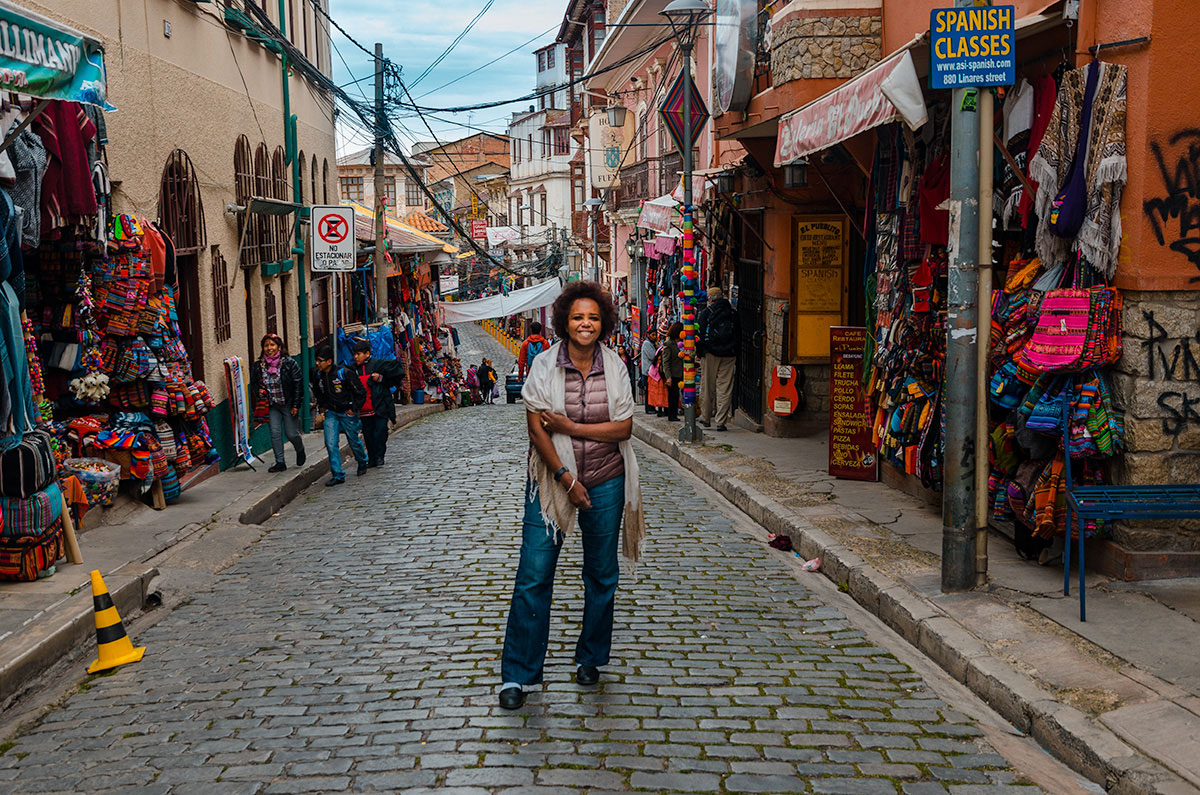
There are all sorts of goods being sold ranging from herbs and incense, to talismans, and offerings for spirits and magical beings.
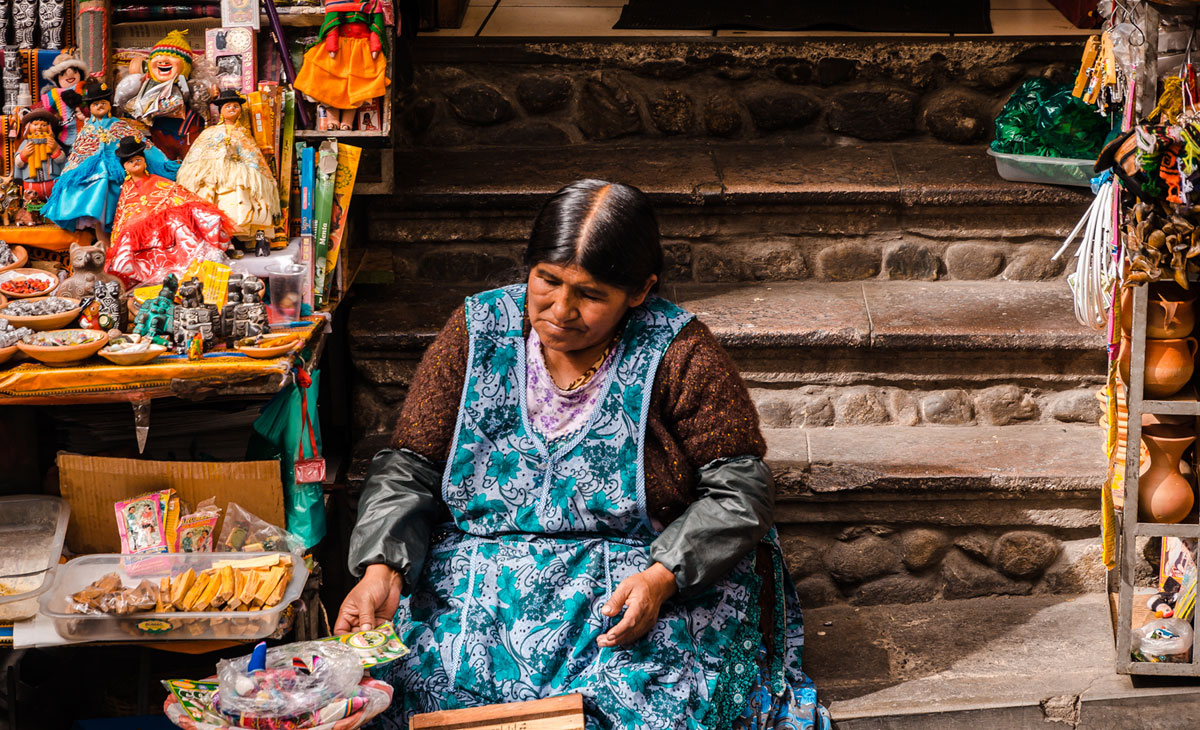
The main customers of the market include indigenous healers who take a holistic approach to medicine and combine herbal and spiritual cures.
Jaen Street (Calle Jaén)
This peaceful, pedestrian street is one of La Paz’s most finely preserved colonial areas. It has brightly plastered facades, wrought-iron balconies and cobblestones with designs. Here Steve and I stand at the top of the street.
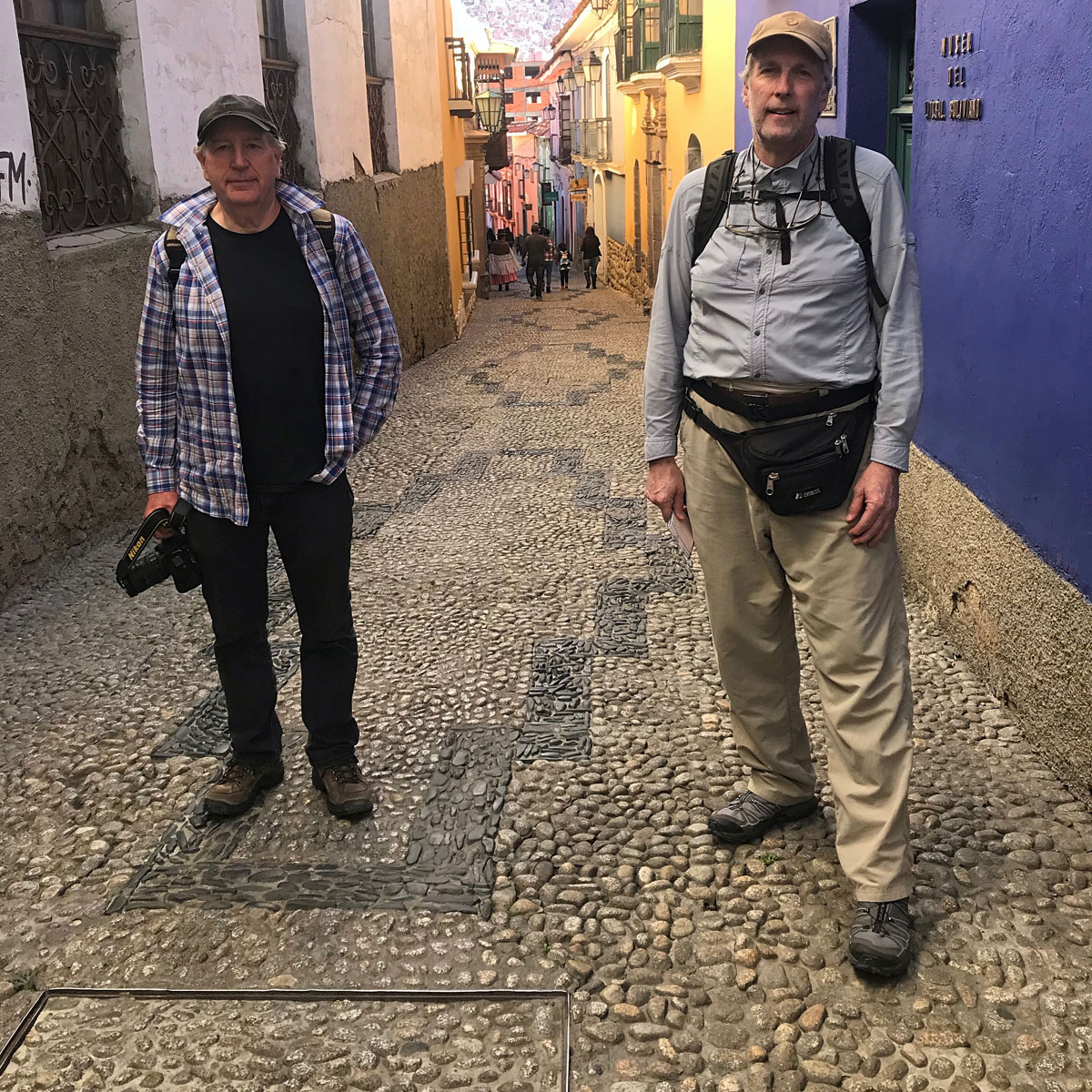
There are a few small museums nearby. We did not visit them as we wanted to continue exploring the neighborhoods.
Walking the Streets
In the areas we walked, there were more than plazas, churches and markets. In fact, we would constantly come upon people who were of interest to us, the first-time visitors. For example, we saw this woman behind the metal fence in front of Santo Domingo Church.

Throughout the city, we saw young men with balaclavas moving about. Eventually we learned they are bootblacks. As this is the job of the very poor and many new immigrants, it was inevitable that a few were alcoholics, drug addicts and thieves. Many considered them to be lowlifes. As a result, they cover their faces to avoid discrimination.
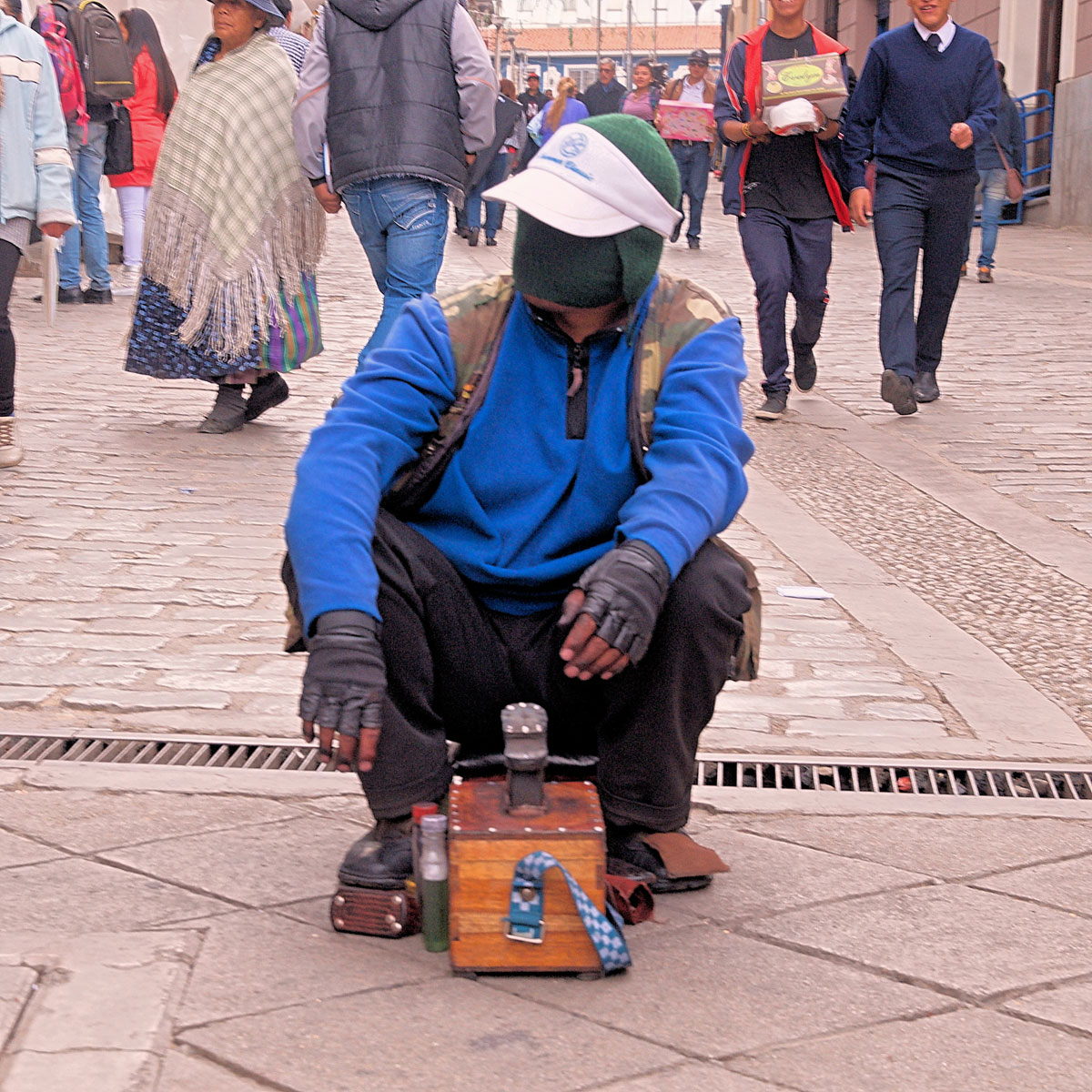
I find this distasteful, as all work is noble, no matter how undesirable or poorly paid.
La Paz streets are predominately on hills, some quite steep. So usually when looking at somebody or thing, it is at an angle. This gives the place a slightly off-kilter feel.
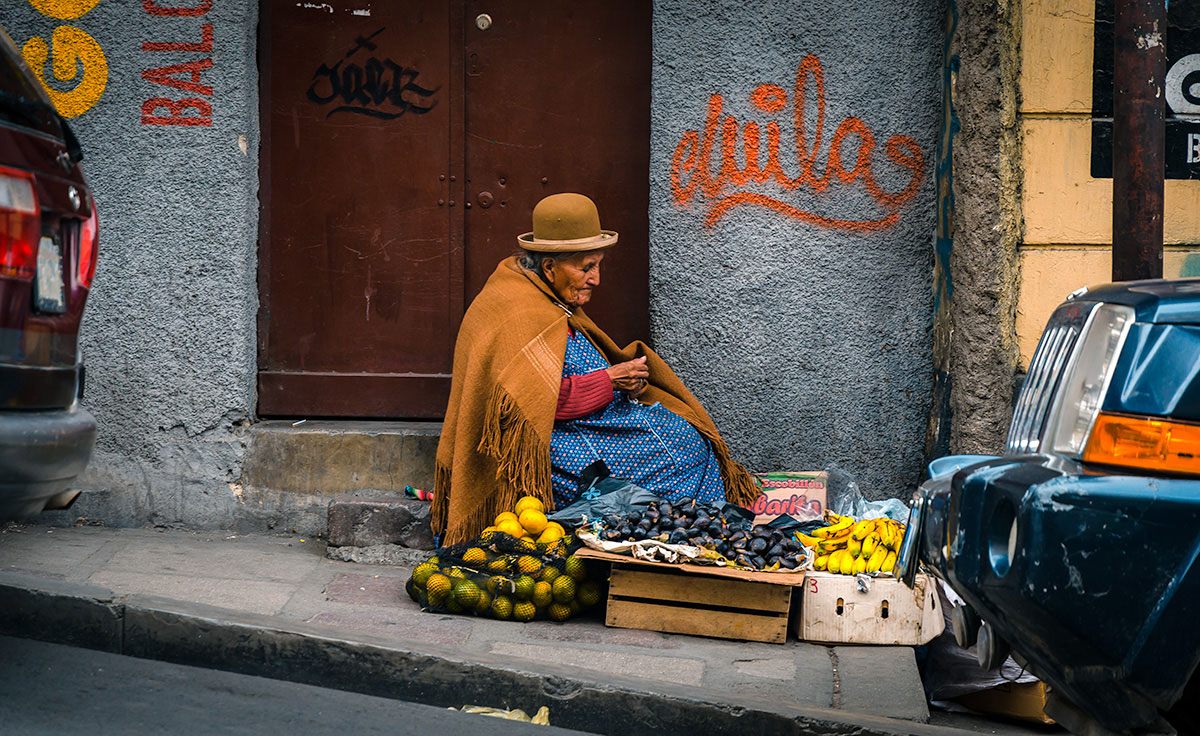
I have traveled in many countries and missed being hit more times than I can remember. I know first-hand there are many contenders for this infamous reputation of the city with the craziest drivers, but I think La Paz is a real contender.
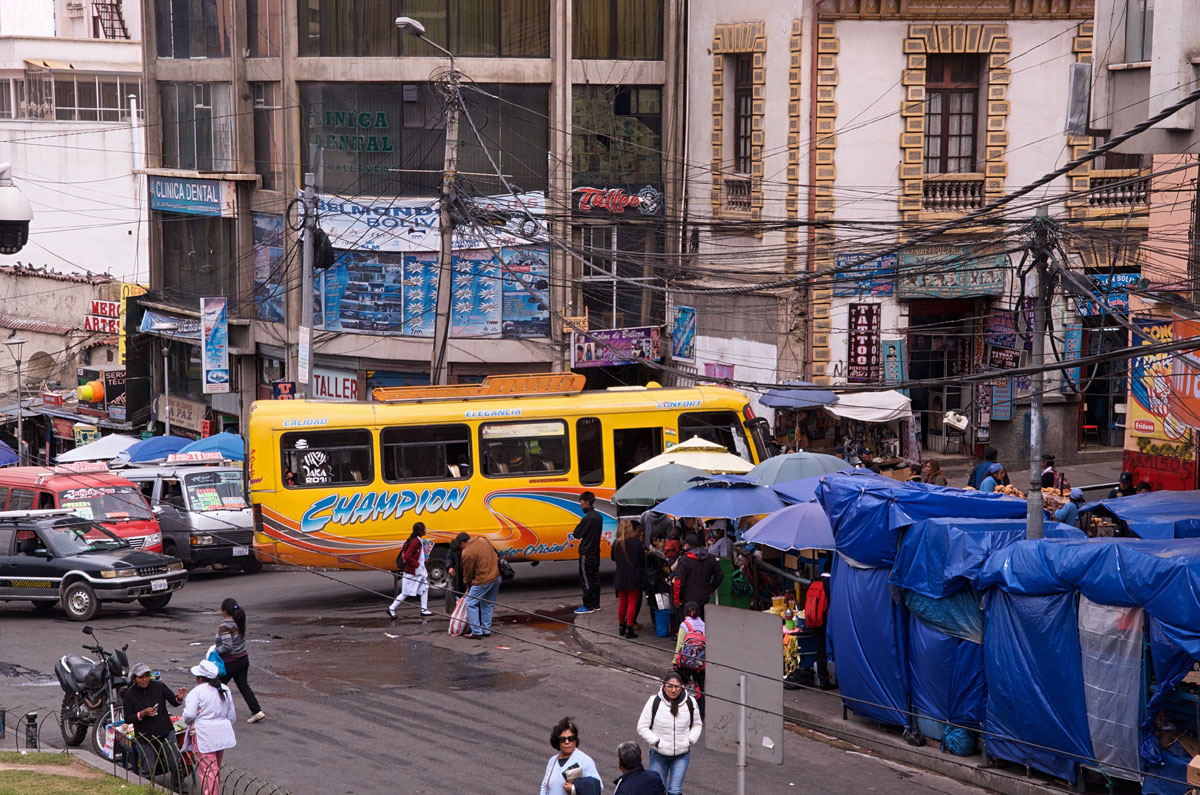
We realized that pedestrians have no rights. If they value their lives, they must watch out for speeding cars, trucks, buses and motorcycles, especially those turning on corners and curves, picking up speed as they go downhill.
Mi Teleférico
At the end of the afternoon of the second day of hours of walking, we took the Mi Teleférico, the cable cars which eliminate time consuming drives. La Paz has the world’s highest cable car system. The project was conceived in the 1970s, but construction only started in 2012. The views are incredible. The cost, for a visitor, is rock bottom cheap. Each of us paid on US$4 for 9 separate trips on 3 lines. We ended up spending four hours on the system and loved every minute of it.
The most interesting part was the Blue Line over El Alto. Usually once you reach the top of a mountain, you go down the other side. However, after escaping the valley of La Paz, at the top of the mountains we found a flat plain that goes on for many mile. El Alto is here with its mostly indigenous population. It was once an outlying neighborhood of La Paz, but now has a larger population. The population and building stock are growing rapidly, significantly aided by the easy and affordable access provided by the cable cars.

As we traveled in the sky, we would often see the underlying main street crowded with markets.

While staring at the captivating views as the sun was descending, it was a good time to reflect on our visit.
Because of the low sun, the shadows were long.
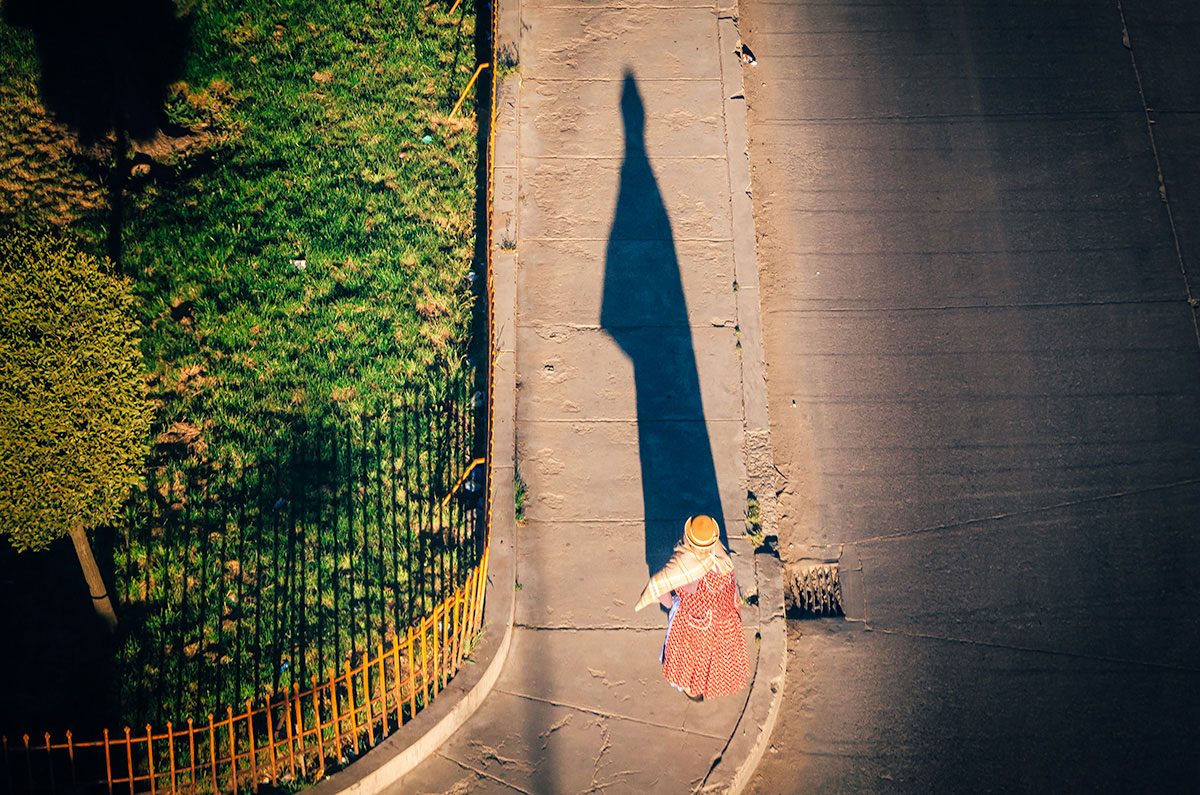
We were leaving the next day. If we had been able to stay longer, we would have walked around parts of El Alto, which is apparently as interesting on the ground as from above. If it was the scheduled nights, we would have gone to see the Fighting Cholitas, indigenous women wrestlers. This is supposed to be some of the best entertainment in all of South America.
Background
Bolivia had been part of the Inca Empire until 1524 when the Spanish began to invade and conquer the area. Within ten years, the conquest was complete and Bolivia’s indigenous population was taken into virtual forced labor. It wasn’t until 1825 that Bolivia won its independence and even then, there was much fighting between Bolivia, Chile, Brazil, and Paraguay. Much of Bolivia’s territory was taken by these three nations for over one hundred years after their independence. There’s been much political unrest in Bolivia as nationalist, democratic, and socialist leaders and movements have come and gone. Today, Bolivia is the poorest country in South America and compared to other countries in the area has fallen far behind in development and social reform.
Geographically, the country is divided into a few sections. The Eastern Andes Mountains run from the north to the south. On the east of the mountains are the plains from the Amazon Basin. On the west is the Altiplano, the highlands of Bolivia. Within the highlands is Lake Titicaca, which lies between Bolivia and Peru. Bolivia is one of two countries in South America that are completely landlocked. The other is Paraguay, on Bolivia’s southeastern border.
As of 2019, Bolivia’s low-density population just reached 11,380,000 and is growing rapidly. Bolivia has a very diverse population with over thirty native ethnic groups. The largest is the Quechuas with 2.5 million. Others include the Aymaras, the Chiquitano, and the Guarani. Indigenous people make up around 55% of the population and mestizos, or people of mixed race, make up another 30%. Many mestizos identify with indigenous cultures in Bolivia. The country has many languages including Castilian Spanish, several indigenous ones and surprisingly German spoken by Mennonites who descended from immigrants who came to the country in the 1920s.
Final Thoughts
Our expectations were wildly exceeded in our short visit to La Paz. We did not think the rest of the country would be as interesting as our time in La Paz. However, the surprises continued in our subsequent journey to Sucre, Potosi and Uyuni. See Bolivia – Part 2 for the story.


